
Poker combinations are the most important part of the game, so it is essential to memorize them very well; otherwise, you risk losing embarrassingly.
Memorizing 10 combinations is not difficult, as they are quite logically arranged – the higher the probability of getting a combination, the weaker it is, and vice versa – the lower the probability, the stronger it is.
Poker combinations video review:
Best poker rooms:
NO LIMIT Texas Holdem Poker combinations
1) Royal flush – royal flush
Royal flush (royal flush) is what every poker player dreams of – an unbeatable hand. This title is given to a sequence of the same suit (e.g., only spades or only hearts) from ten to ace (10, J, Q, K, A).
The probability of getting such a hand is very low, so don't be surprised that various jackpots and other prizes are offered for such a combination in various tournaments or online poker rooms.
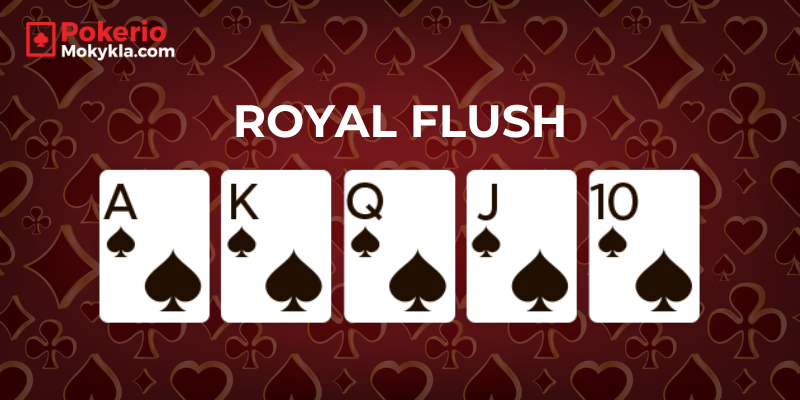
2) Straight flush – straight flush
This is a very similar hand to the royal flush, but here it can be any sequence and suit, that is, it can be from three to seven or from nine to king, but it is important that it is the same suit (clubs, hearts…)
The chances of getting a straight flush are higher than a royal flush. The higher sequence wins, so if, for example, the community cards are clubs 5, 6, and 7, and you have 8 and 9, you will win against an opponent who is happy to have clubs 3 and 4.
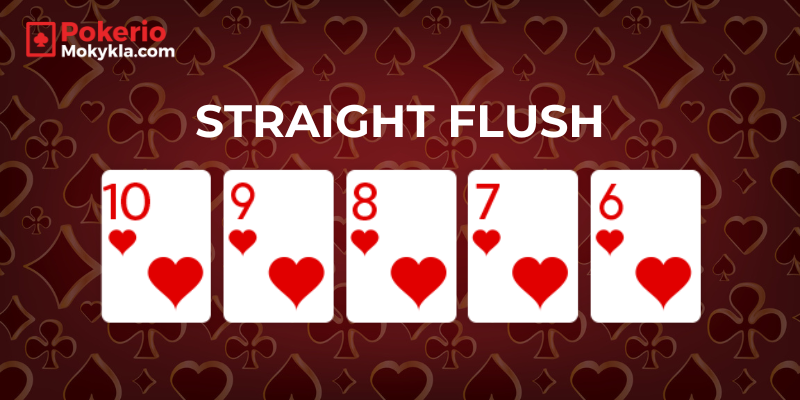
3) Four of a kind – four of a kind
The name of the hand gives it away – you need to have four of the same cards, and the fifth can be any card. For example, you can have 4 aces and a deuce – this is a very strong hand. Again, it is possible that two people will have 4 of the same (although very rare), so the one with the higher four will win (four aces will beat four kings, etc.)
Also, it happens that more than one player has four of the same (e.g., all aces), so in this case, the player with the higher fifth card wins. For example, all four of the same cards are revealed on the table as community cards, the fifth card is a four, and three players are playing.
The one with the highest card in hand will win, for example, a queen, when the others have a seven and a five as their highest cards.
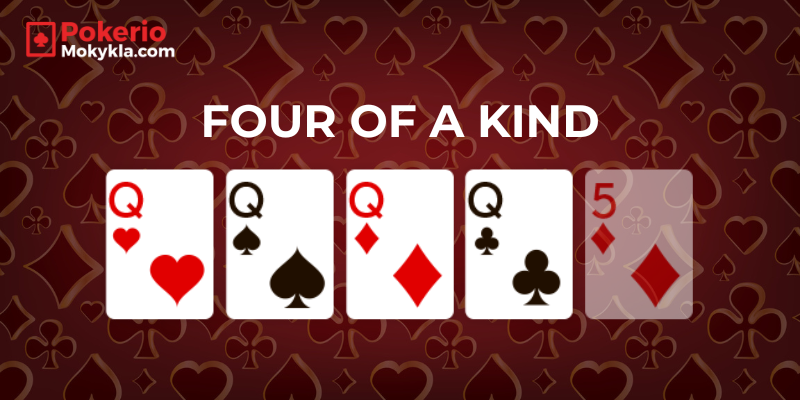
4) Full house – full house
A full house is a situation where you have three cards of one value and a pair of another.
Three aces and two kings – the strongest full house, beating other full houses, for example, three kings and two aces.

5) Flush – flush
A flush is not all black or all red; it is five cards of the same suit, for example, five hearts.
If several players have five cards of the same suit, the one with the highest card wins.
Note that the highest card wins, and if the highest card is the same – the second highest card, and so on.

6) Straight – straight
A straight is five consecutive cards. A straight can be from A to 5, from 2 to 6, etc., up to 10 to ace.
The higher the straight, the stronger it is and beats other straights. A simple straight can be any sequence of consecutive cards, regardless of their suit (whether it is 3 spades and two hearts, or 4 hearts and a club – it doesn't matter).
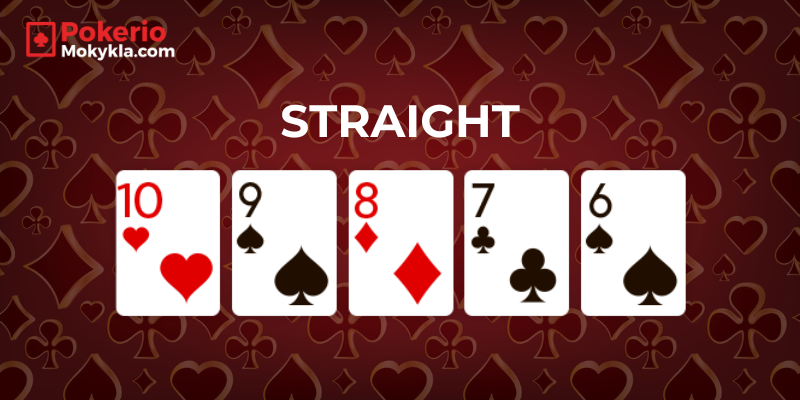
7) Three of a kind – three of a kind
Three of a kind is three cards of the same value and two any other cards that do not form a pair. If it were also a pair – it would be a full house (see above). So, it can be 10, 10, 10, 2, and 5 or any other similar combination.
The higher the three of a kind, the stronger the hand, which is relevant if two or more players have three of a kind. If the value of the three of a kind is the same for the players, the two additional cards become important.
The hand with the higher additional card wins.
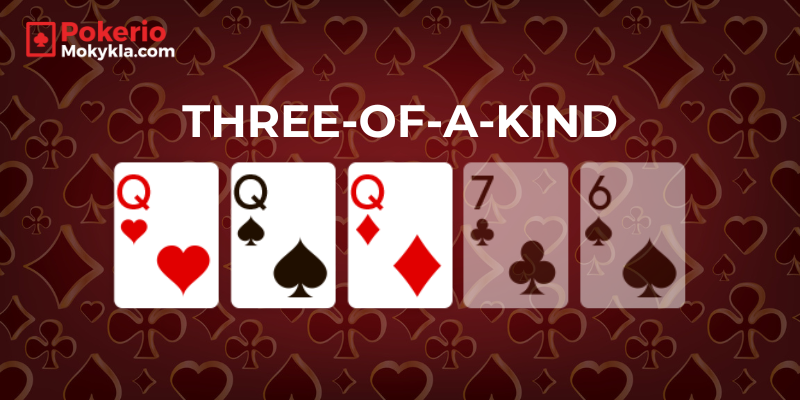
8) Two pair – two pair
Two pair is four cards that form two separate pairs (two cards of the same value each) and a fifth any card.
For example, two tens and two kings and a queen. If two or more players have two pairs, the one with the higher pair wins.
If the higher pair is the same – the one with the higher second pair wins.
If the second pair is also the same – the player with the higher fifth card wins.
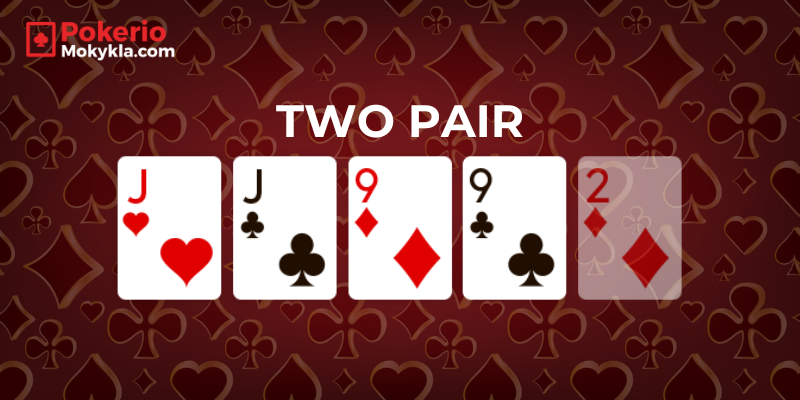
9) Pair – pair
A pair is two cards of the same value. The higher the pair, the stronger it is: a pair of kings will beat a pair of tens, etc.
If players have a pair of the same value, the one with the higher non-pair card wins.
If this also matches, another card is taken for comparison based on its value, and so on.
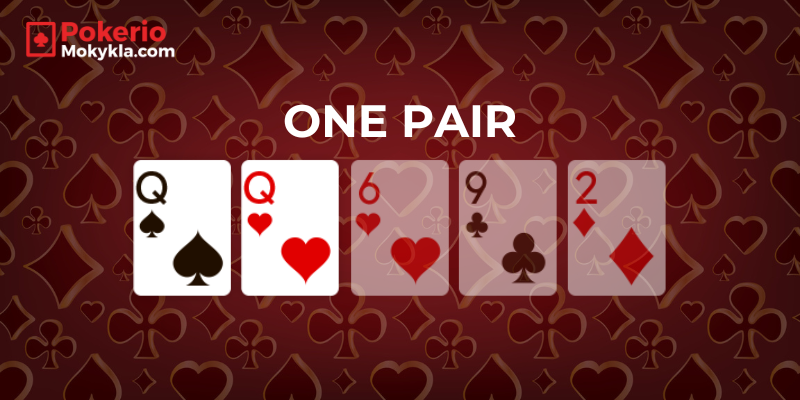
10) High card – highest card
If players fail to form any poker combination, the player with the highest card in hand wins.
If the highest card matches, the second card is taken, and so on, until the winner is determined.
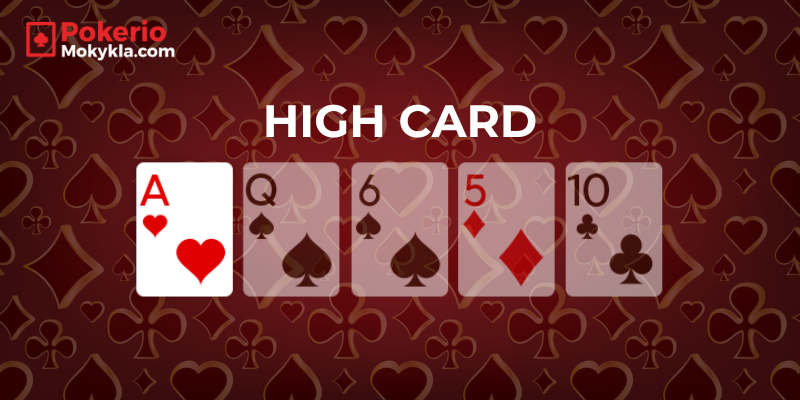
As we mentioned at the beginning, the combinations listed above beat each one below and lose to each one above.
If you want to take further steps in your poker career, read about poker rules and the terms used in poker.





